Complete Solutions to Exercise 7.1 of chapter SUPERPOSITION AND STANDING WAVES of Class 11 book with complete answers and questions
| Class 11 | PHYSICS |
| Chapter | SUPERPOSITION AND STANDING WAVES |
| CENGAGE PHYSICS | Exercise 7.1 |
| Number Of Questions | 19 |
| Academic Year | 2023-24 |
Two sound waves with amplitude ` 4 cm and 3 cm` interfere with a phase difference of
a. `0` b. `pi//3` c. `pi//2` d. `pi`
Find the resultant amplitude in each case.
View SolutionFind the resultant amplitude and the phase difference between the resultant wave and the first wave , in the event the following waves interfere at a point , ` y_(1) = ( 3 cm) sin omega t`,
`y_(2) = ( 4 cm) sin (omega t + (pi)/( 2)), y_(3) = ( 5 cm ) sin ( omega t + pi)`
View SolutionWhen two waves interfere , does one alter the progress of the other ?
View SolutionWhen waves interfere , is there any loss of energy ?
View SolutionA travelling wave has speeds `50 m//s and 200 m//s` in two different media `A and B` . Such a wave travelling through `A` , gets incident normally on a plane boundary , separating `A and B`. Find the ratio of amplitudes of the reflected and transmitted waves.
View SolutionFigure `7.20` shows a tube structure in which signal is sent from one end and is received at the other end . The frequency of the sound source can be varied electronically between `2000 to 5000 Hz`. Find the frequencies at which maxima of intensity are detected . The speed of sound in air `340 m//s`.
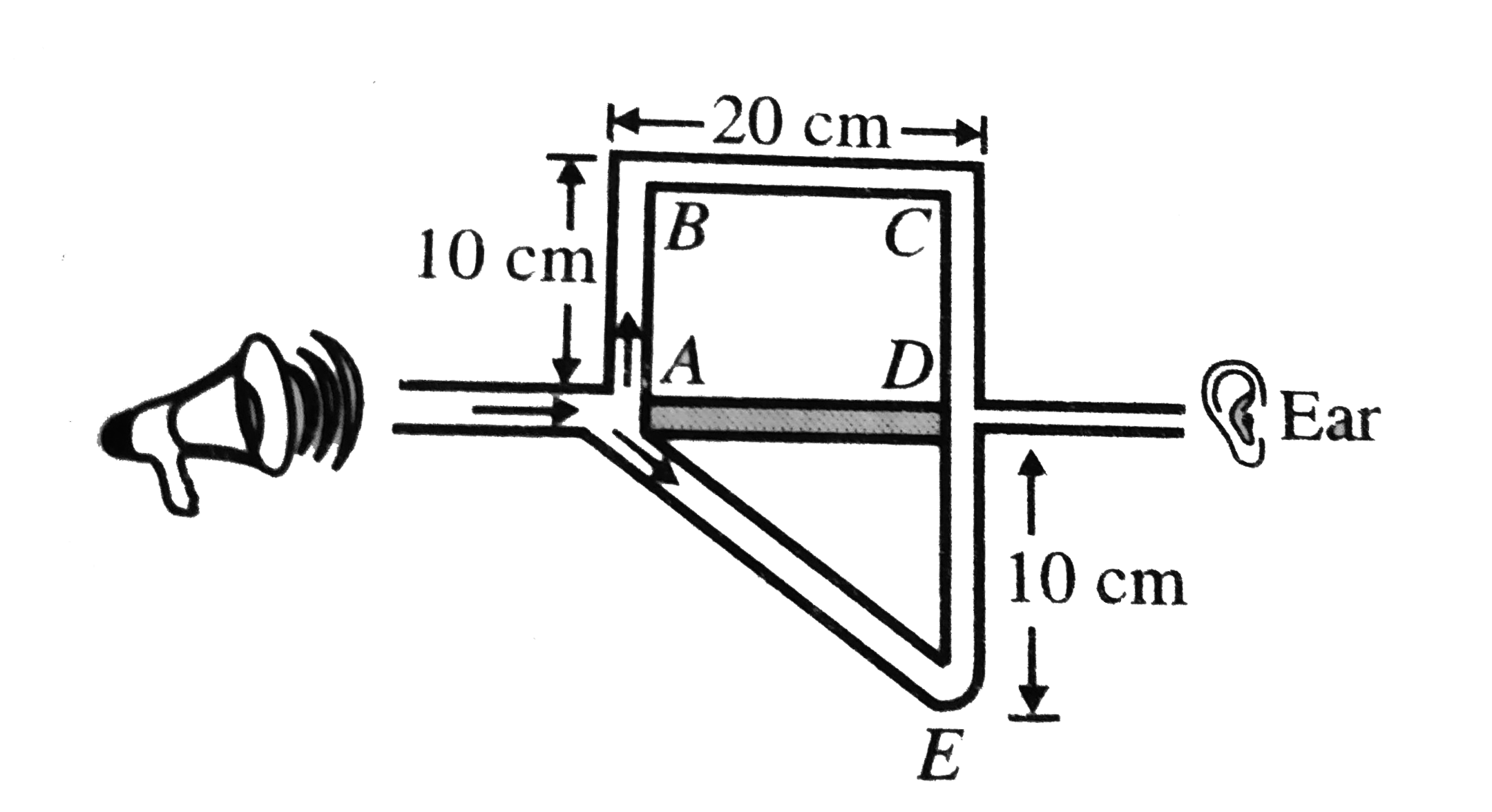
View SolutionTwo small loudspeakers `A , B` ( `1m` apart) are connected to the same oscillator so that both emit sound waves of frequency `1700 Hz` in phase . `A` sensitive detector , detects a maximum wave at `P` on the perpendicular bisector `MP of AB` and another maximum wave when it first reaches a point `Q` directly opposite to `B`. Calculate the speed `c` of the sound waves in air .
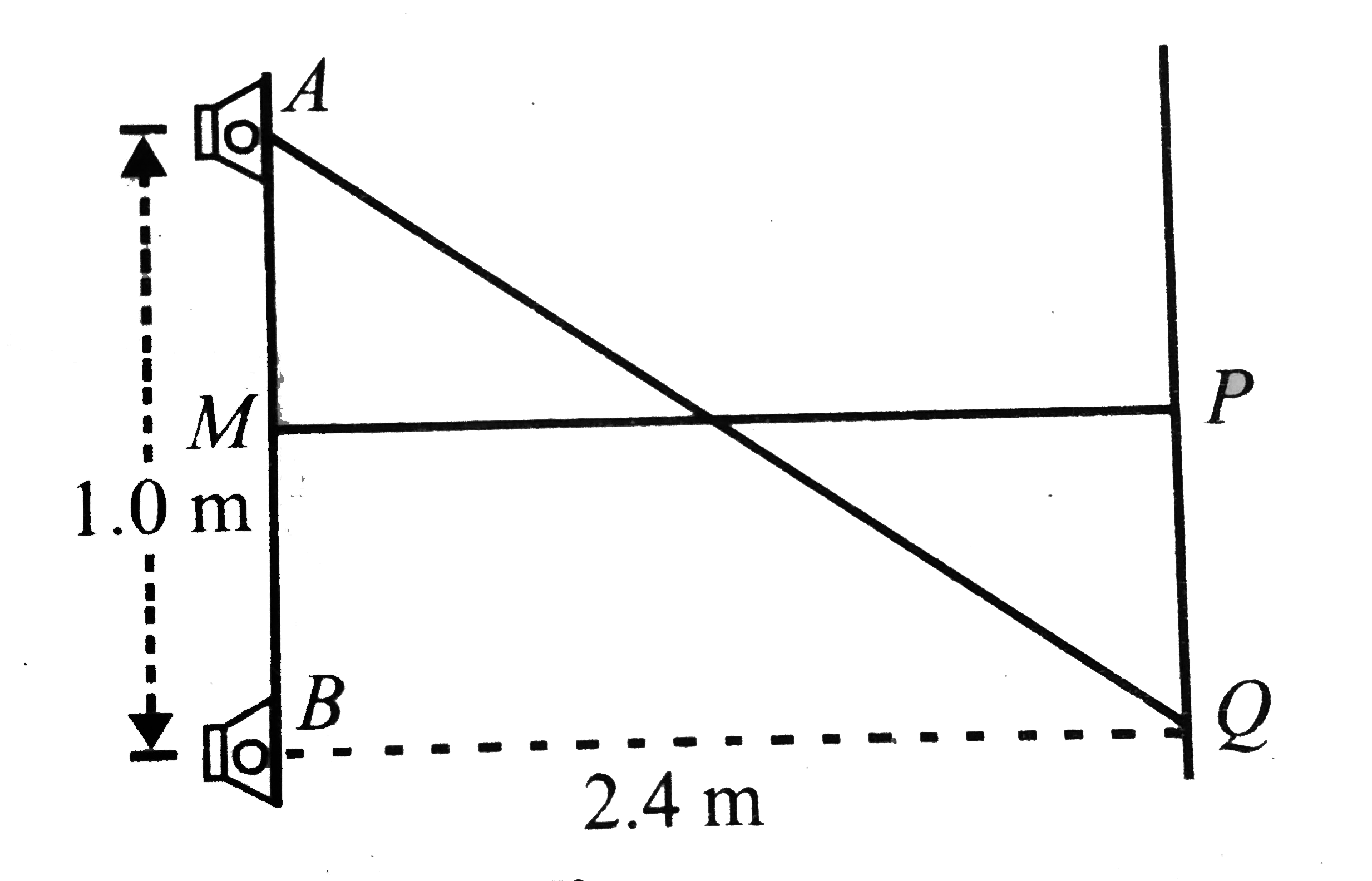
View SolutionA source and a detector ` D` of high frequency waves are `a` distance `d` apart on the ground . Maximum signal is received at `D` when the reflecting layer is at a height `H`. When the layer rises a distance `h` , no signals is detected at `D` . Neglecting absorption in the atmosphere , find the relation between ` d , h , H`, and the wavelength `lambda` of the waves .
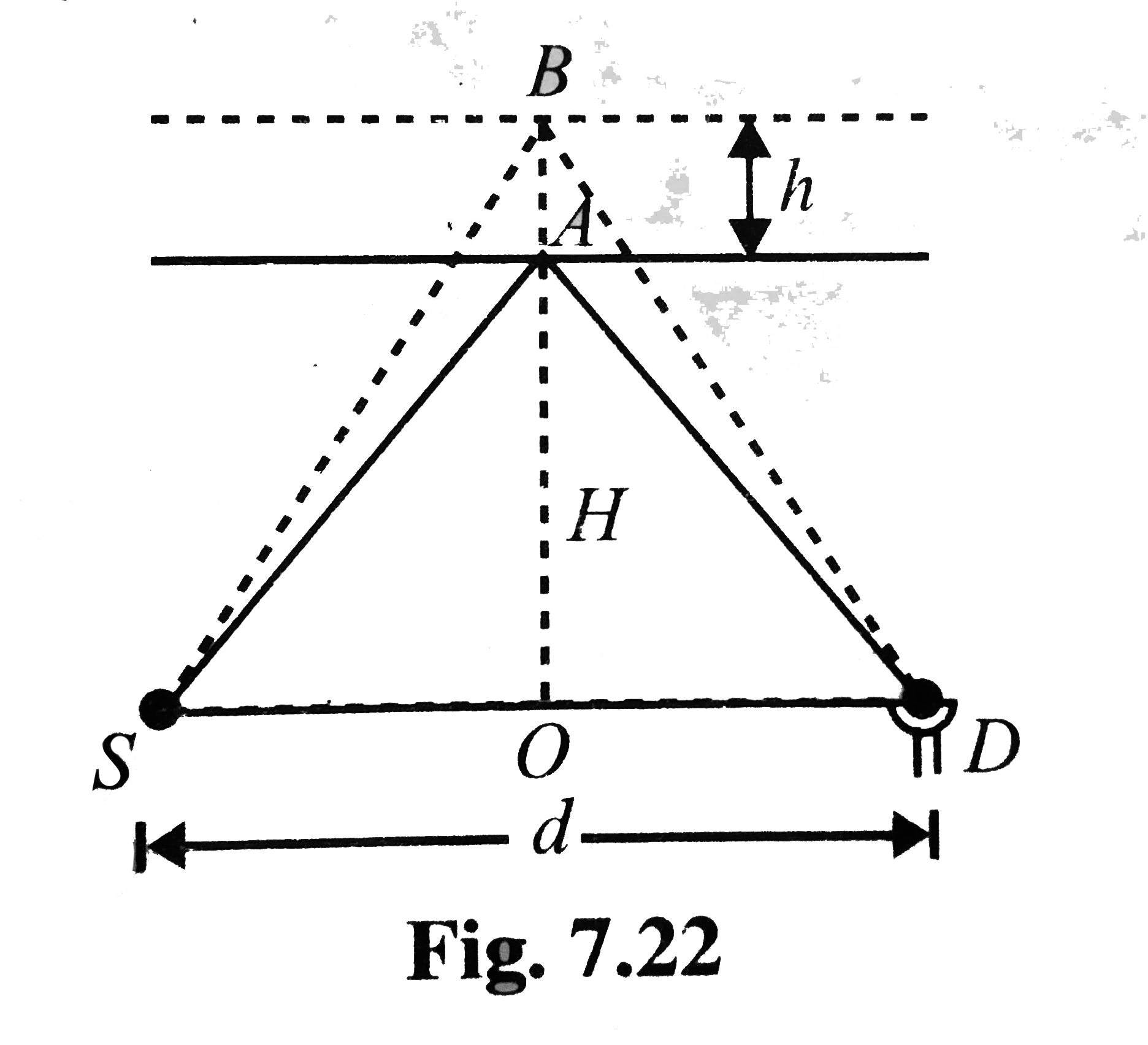
View SolutionTwo waves have the same frequency . The first has intensity `I_(0)`. The second has intensity `4I_(0)` and lags behind the first in phase by `pi//2`. When they meet , find the resultant intensity , and the phase relationship of the resultant wave with the first wave .
View SolutionDetermine the amplitudes of the resultant motion when two sinusoidal waves of same frequency , travelling in the same direction are combined . Their amplitudes are `3.0 cm and 4.0 cm` and they differ in phase by `pi//2 radians `.
View SolutionIn a large room , a person receives direct sound waves from a source `120 m` away . He also receives waves from the same source which reach him after being reflected from the ` 5 m` high ceiling at a point halfway between them . For which wavelengths will these two sound waves interfere constructively ?
View SolutionSound waves from a tuning fork placed at a point `P` reach another point `Q` , by two separate paths `PRQ and PSQ` . When `PSQ` is greater than `PRQ by 11.5 cm` , there is silence at `Q` . When the difference is `23 cm` , the sound becomes loudest at `Q`, and when `34.5 cm` , there is silence , and so on . Explain this effect and calculate the frequency of the fork if the velocity of sound is taken to be `331.2 m//s`.
View Solutionshow that when reflection takes place from a boundary separating two media and the velocity in the second medium is infinitely large , the amplitude of the reflected wave is equal to the amplitude of the incident wave and there is a phase change of `pi` in the displacement wave.
View SolutionStationary waves are produced in a length of wire fixed between two points . Compare the amplitudes at an antinode for the fundamental and the first overtone . Assume that the total energy of the initial waves is, on an average, equally divided between the two modes.
View SolutionTwo speakers connected to the same source of fixed frequency are placed 2.0m apart in a box. A sensitive microphone placed at a distance of 4.0 m from their midpoint along the perpendicular bisector shows maximum response. The box is slowly rotated until the speakers are in line with the microphone. The distance between the midpoint of the speakers and the microphone remains unchanged. Exactly five maximum responses are observed in the microphone in doing this. the wavelength of the sound wave is
View SolutionA wave pulse on a string has the dimensions shown in figure. The wave speed is `v=1 cm//s`.
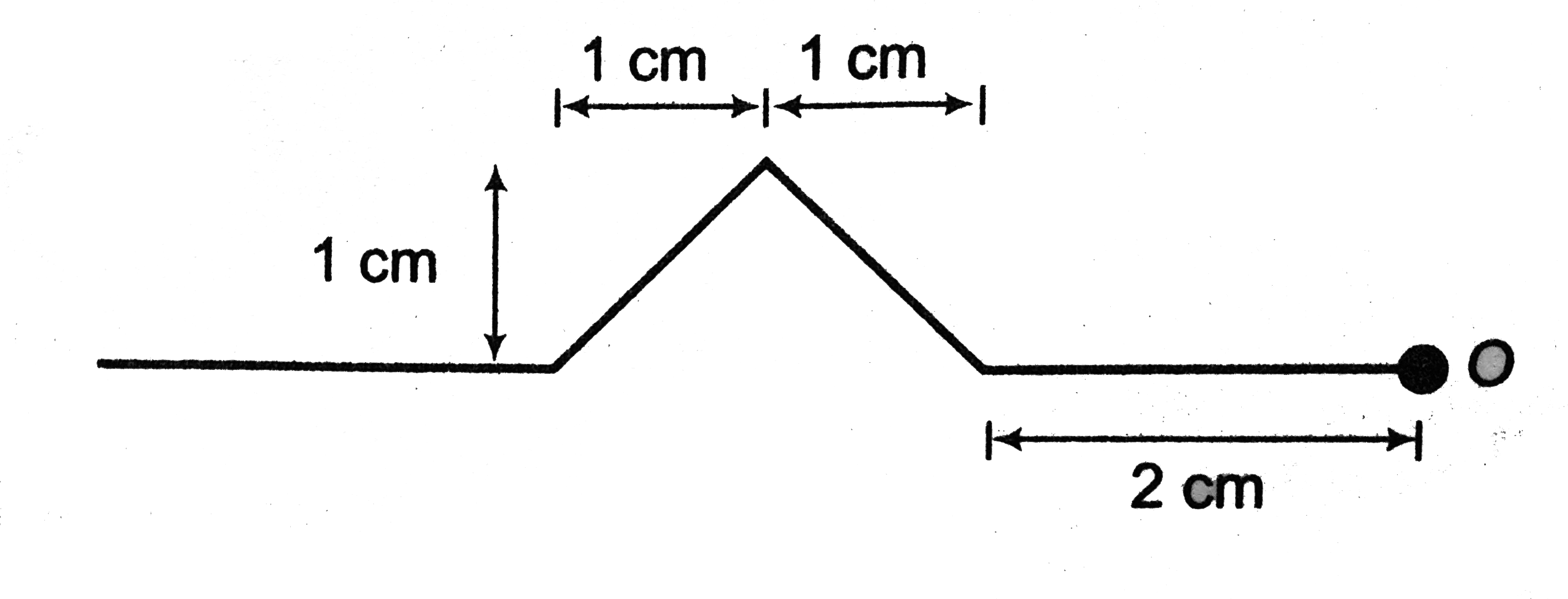
(a) If point O is a fixed end, draw the resultant wave on the string at t=3 s and t=4 s.
(b) Repeat part (a) for the case in which O is a free end.
View SolutionA wave pulse on a string has the dimensions shown in Fig. `7.24 at t = 0`. The wave speed is `5.0 m//s`. (a) If point `O` is fixed end , draw the total wave on the string at ` t = 1.0 ms , 2.0 ms , 3.0 ms , 4.0 ms , 5.0 ms , 6.0 ms and 7.0 ms`. (b) Repeat part (a) for the case in which point `O` is a free end .
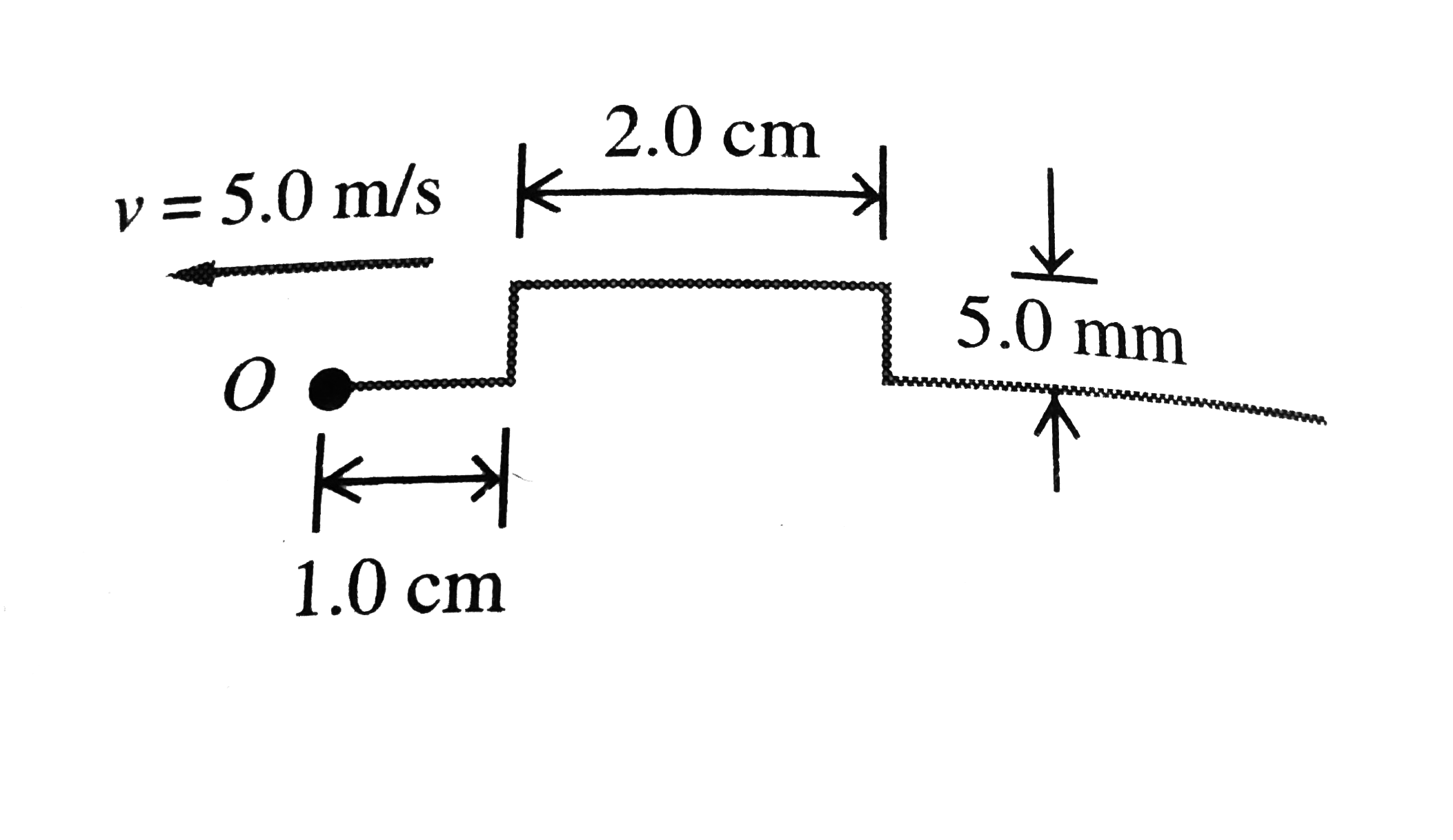
View SolutionTwo triangular wave pulses are travelling toward each other on a stretched string as shown in Fig . 7.25. Both pulses are identical to each other and travels at `2.00 cm//s`. The leading edges of the pulses are `1.00 cm `apart at `t = 0` . Sketch the shape of the string at ` t = 0.250 s, t = 0.500 s , t = 0.750 s, t = 1.000 s and t = 1.250 s`.
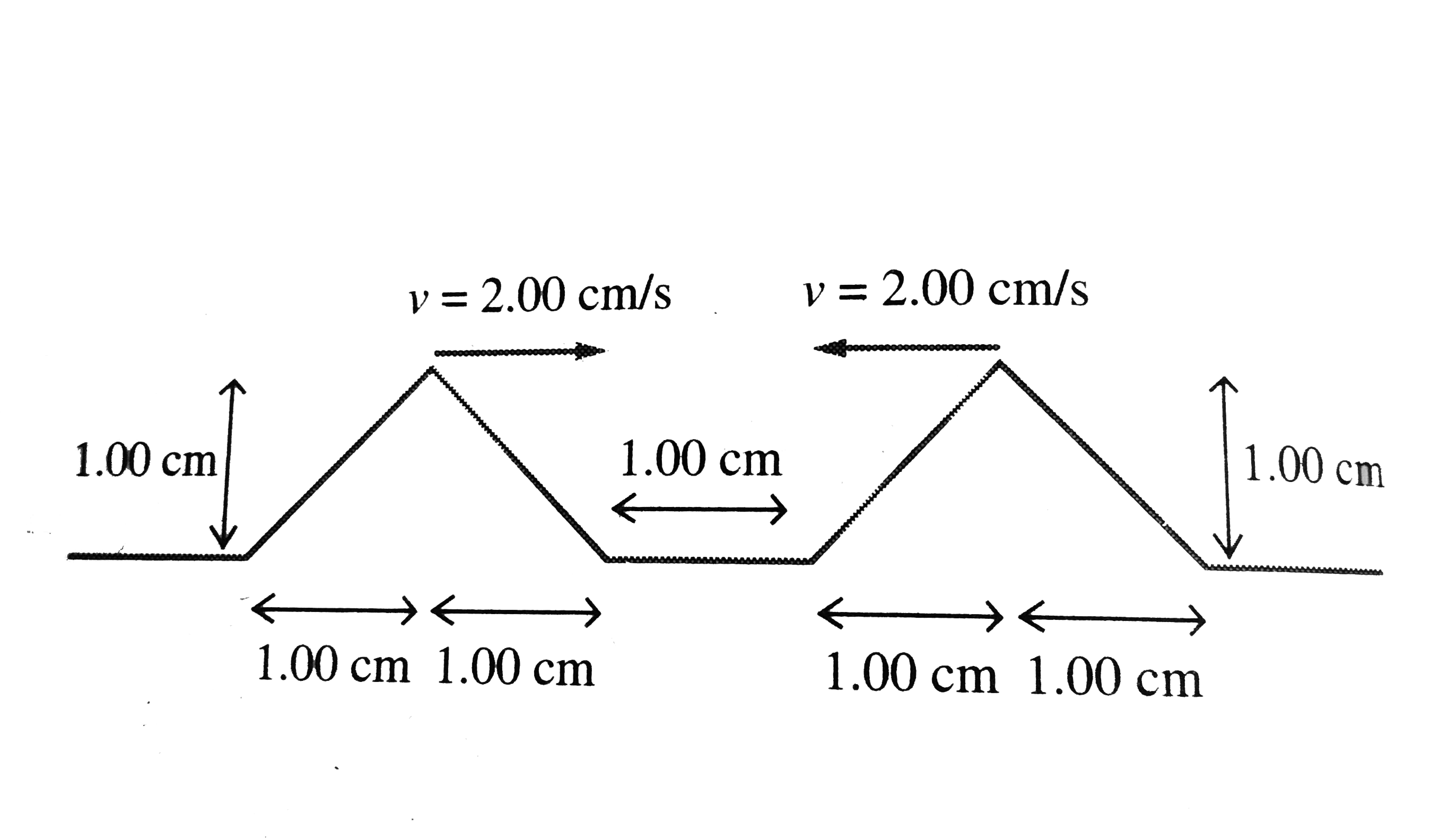
View SolutionA sound wave may be considered either as a displacement wave or as a pressure wave . When reflection takes place from as a rigid wall , what phase change do you except in its displacement representation and in its pressure representation?
View Solution
Exercise 7.1 questions and complete solutions for chapter SUPERPOSITION AND STANDING WAVES of CENGAGE PHYSICS (HINGLISH) of Class 11